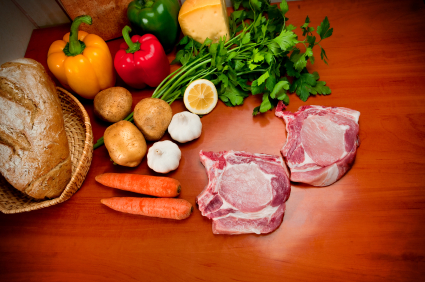 This week, we are focusing on the flexible eating plan. The book, Flexible Dieting: Lose Weight and Start Eating Again by Ted Kallmyer has incredible resources regarding flexible eating plans. Many T-School students and coaches, alike, have been drawn into trend diets that go in and out of fashion over the years. As Kallmyer writes, “they all fall short because we live in a world with all kinds of delicious and creative foods. Diets that eliminate entire food groups just aren’t realistic long-term.” Kallmyer’s solution for finding a healthy way to eat that is actually maintainable is called flexible dieting.
This week, we are focusing on the flexible eating plan. The book, Flexible Dieting: Lose Weight and Start Eating Again by Ted Kallmyer has incredible resources regarding flexible eating plans. Many T-School students and coaches, alike, have been drawn into trend diets that go in and out of fashion over the years. As Kallmyer writes, “they all fall short because we live in a world with all kinds of delicious and creative foods. Diets that eliminate entire food groups just aren’t realistic long-term.” Kallmyer’s solution for finding a healthy way to eat that is actually maintainable is called flexible dieting.
What is flexible dieting?
Basically, flexible dieting is a concept which states that you can lose weight or gain muscle mass and eat WHATEVER YOU WANT, as long as you follow a daily allotted amount of carbs, protein, and fat. As long as Total Daily Energy Expenditure (TDEE) is more than your daily calorie intake, you will lose weight, not matter WHAT you are eating. However, in order to stay healthy, there are guidelines we should follow.
Eat 85% Healthy Foods
Kallmyer suggests that 85% of our daily diet consist of healthy foods (such as fresh veggies, fruit, and lean protein). That leaves 15% of your intake for the day could come from your favorite indulgences, from candy to potato chips.
Don’t Get Discouraged
Flexible dieting offers slow and stead weight loss, unlike the quick, sudden weight loss you might experience with a fab diet. So don’t get worried if you don’t drop a ton of weight in the first couple of weeks. Flexible dieting is designed to keep your calorie intake at approximately 20% of your TDEE to promote safe, sustainable weight loss. So, keep it up!
Calculating Macros
 Understanding Macros, or macronutrients, is the next step on the journey of flexible eating. Macros make up 100% of your daily calories, and can be broken down into three categories: Carbs, Fats, and Proteins.
Understanding Macros, or macronutrients, is the next step on the journey of flexible eating. Macros make up 100% of your daily calories, and can be broken down into three categories: Carbs, Fats, and Proteins.
Kallmyer gives formulas for calculating both your TDEE and your macros, but if you can also use the handy calculator here (https://healthyeater.com/flexible-dieting-calculator)! Simply enter your weight, height, activity level, and whether you are wanting to lose, gain, or maintain your current weight. The calculator will help you find how many calories you should be eating at each meal, and how much of that meal should be carbs, protein, and fat.
Depending on your goals, the appropriate percentages of carbs, protein, and fat may shift slightly. For example. Someone who is carb sensitive or diabetic may wish to reduce the percentage of carbs in their daily diet. Those who are looking to gain muscle may find success by increasing protein. Consult with your T-School coaches to find the right ratios for you. Like everything else in your journey to health, this is a process, and may take some adjusting. It’s all about balance!
Luckily, T-School is here to help you learn about and maintain your flexible diet. Ask us about using digital food scales and understanding nutritional labels. Once you get the hang of it, flexible dieting will become second nature….or at least tolerable!
Leave a Reply